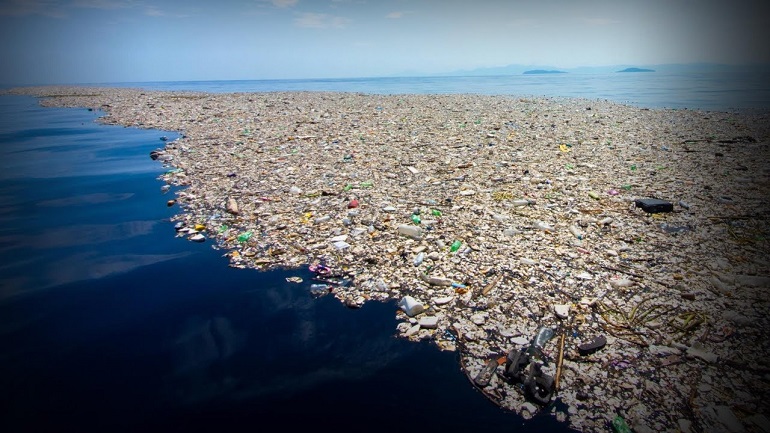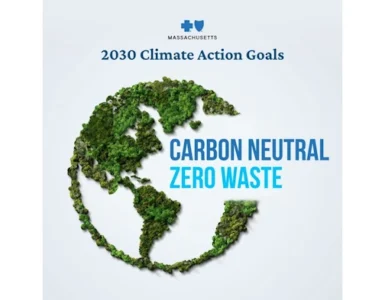Oceans: on the trail of the mystery of lost plastic
Millions of tons of plastic are thrown into the sea every year, but only a small part is visible. Where does the rest go? Researchers are now one step closer to solving the mystery of lost plastic.
In recent years, images of bottles and bags clumping together in mid-ocean currents or beaches covered in litter have sparked campaigns against throwaway culture. But this visible pollution is only the tip of the iceberg.
So an international team of scientists set out on the hunt, deploying unprecedented efforts to track down the debris.
Some four to 12 million tons of plastic end up in the oceans each year, but scientists estimate that only 250,000 tonnes are present on the surface. And 99% of everything that has been dumped at sea for decades cannot be found.
Degraded by erosion, the sun and the action of bacteria, the density of the plastics changes, they find themselves at the mercy of the currents and once they are carried down to the depths, they become much more difficult to follow.
It’s quite difficult to know where they all are, because there are a lot of processes at work, said a specialist from Newcastle University. Even plastic on the surface can sink and then rise again.
In what could be a real breakthrough, the researcher used a computer model of ocean currents on plastics of three different densities to locate where the fragments cluster after sinking.
The model shows accumulations of plastics at various depths in the Mediterranean, Indian Ocean and Southeast Asian waters, a big waste management problem.
Scientists believe that much of the plastic ends up on the seabed. A recent study had also found microplastics in the entrails of mini-crustaceans living at a depth of nearly 11 km in the Mariana Trench, the deepest known.
Pollution on the shores
Junk disposal experts’ calculations are preliminary, but their results could help identify places for further research and thus better understand the impact of this pollution on ecosystems, with research inspired by the work by oceanographer Eric van Sebille of the Dutch University of Utrecht.
We know about the existence of floating landfills, so it makes sense to focus on them. And surface plastics probably have the most impact because the organisms live mainly near the surface. But if you want to grasp the magnitude of the problem, then you have to go deeper.
Current research focuses on the fact that plastic pollution is now so great that tracking the fragments could provide important insights into how ocean currents work.
Reseachers’ intuition – to be confirmed with more sophisticated model simulations – is that the vast majority of plastic waste dumped in the seas eventually returns to the shores, requiring dumpster rentals to remove that waste. This could explain the discrepancy between the volume entering the oceans and what can actually be observed today.
The plastic carried by a river towards the sea stays near the coast for a while and can wash up again on land. And a significant part could do that. So focusing on cleaning up coastal areas could prevent this pollution from spreading offshore.
A series of studies on plastic waste were presented at the European Geosciences Union meeting in Vienna recently. One of them highlights contamination of the Forni glacier in the Italian Alps. Italian experts have found between 28 and 74 pieces per kilo of sediment analyzed. This suggests that the glacier contains between 131 and 162 million pieces of plastic.
We have now found microplastics from ocean trenches to glaciers, according to scholars from the University of Milan.
The cost of renting a dumpster in Chattanooga
So if we want to reduce all this plastic waste as well as other types of waste, why not renting a dumpster to remove all the old junk from your home or business? Be it in Tennessee or somewhere else in the USA.
The cost of renting a dumpster in Chattanooga, TN, can vary depending on several key factors. These include the size of the dumpster, the duration of the rental, the type of waste you plan to dispose of, and the specific rental company you choose.
In Chattanooga, as in most places, dumpsters are available in various sizes, typically ranging from 10 to 40 cubic yards. The rental fee increases with the size of the dumpster, with smaller containers being more affordable (click here for more information). On average, you can expect to pay around $250 to $500 for a one-week rental of a 10-yard dumpster, which is suitable for small cleanout projects or minor renovations. Larger dumpsters, appropriate for larger construction projects or extensive cleanouts, can cost between $500 and $900 or more for a week-long rental.
The type of waste you intend to dispose of can also impact the price. Standard household junk or construction debris is usually less expensive to dispose of than hazardous materials, electronics, or heavy materials like concrete and dirt.
It’s important to keep in mind that dumpster rental companies in Chattanooga may have additional charges for permits, overage fees, or specific disposal requirements. To get an accurate cost estimate, it’s advisable to reach out to local dumpster rental providers and obtain quotes tailored to your project’s needs. Comparing quotes from multiple companies can help you find the best deal for your specific situation. Prices may also fluctuate over time, so it’s a good practice to plan your rental well in advance.















